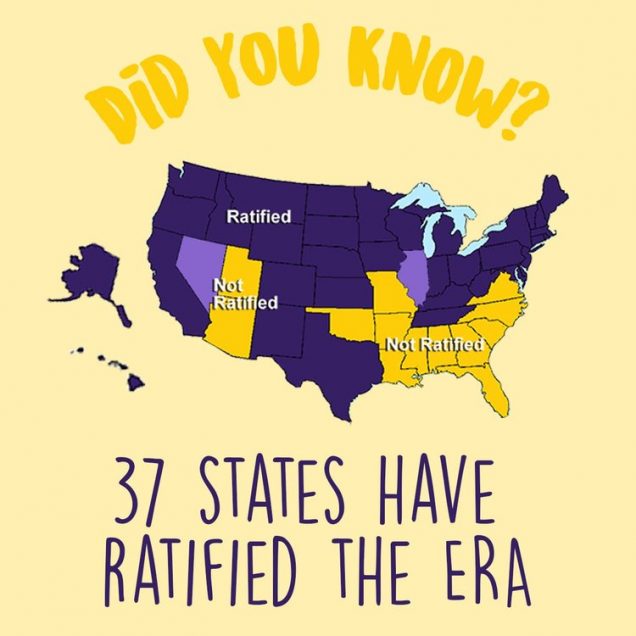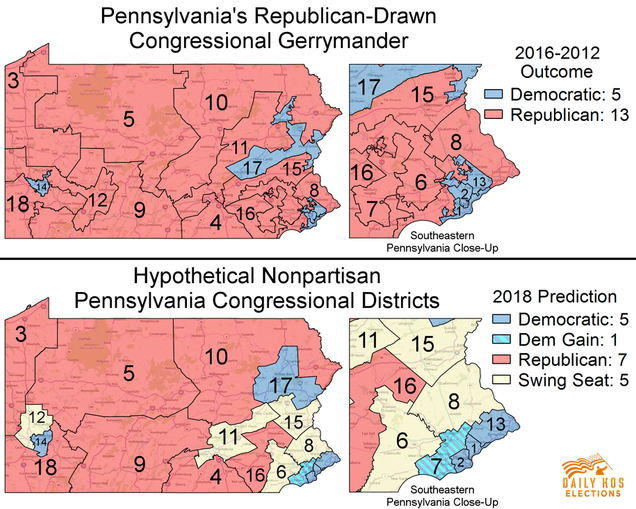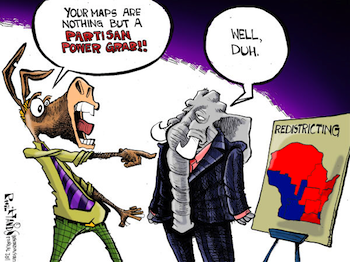Category: Analysis
Massachusetts Regulates Short-Term Rentals
Massachusetts’s Governor Baker signed An Act Regulating and Insuring Short-Term Rentals on December 28, 2018. The act regulates short-term rentals provided through services like Airbnb. The governor rejected an earlier version of the bill, and returned amendments primarily allowing for an exemption for owners who rent out their property for two weeks or less per year, and reducing the amount of information provided publicly about rentals owners. The bill was motivated by concerns that the rise in short-term rentals drives up housing costs and pushing out long-term residents. The statewide bill comes after both Boston and Cambridge individually passed laws essentially having the same effects. However, the Boston law was challenged by Airbnb, who filed suit in federal court claiming that the regulations are “Orwellian” and violate several laws, including laws that protect online companies from being held liable for the actions of their users. The city of Boston is currently holding off on some of the regulations passed pending the resolution of the court case. Airbnb had not yet said if it will challenge the new Massachusetts law.
The statewide law has two main components: first, that all short-term rentals are taxed by the Commonwealth, and can be additionally taxed by local governments, and second, that all owners of short-term rental properties must register with the state and hold insurance. The registration requirement was a cause of debate.  Lawmakers, including Governor Baker, were concerned about violating the privacy of owners by publishing their names and addresses publically. In the amendments to the July bill that Governor Baker rejected, the registration requirement was changed so that only the owner’s neighborhood and street name would be published, not their exact address. The law also dictates eligibility in order to register. To be eligible to be a short-term housing unit, the space must be compliant with housing code, be owner-occupied and be classified for residential use, among other requirements. Another cause of debate was an exemption for occasional renters. Governor Baker originally wanted owners who rent their properties for 150 days or less to be exempt from the regulations. However, in the final version of the bill, the exemption was decreased to 14 days.
Lawmakers, including Governor Baker, were concerned about violating the privacy of owners by publishing their names and addresses publically. In the amendments to the July bill that Governor Baker rejected, the registration requirement was changed so that only the owner’s neighborhood and street name would be published, not their exact address. The law also dictates eligibility in order to register. To be eligible to be a short-term housing unit, the space must be compliant with housing code, be owner-occupied and be classified for residential use, among other requirements. Another cause of debate was an exemption for occasional renters. Governor Baker originally wanted owners who rent their properties for 150 days or less to be exempt from the regulations. However, in the final version of the bill, the exemption was decreased to 14 days.
Not surprisingly, the hotel industry supports the bill. Paul Sacco, the President and CEO of Massachusetts Lodging Association, said:
“This is a tremendous victory for municipal leaders and the people of Massachusetts who have been waiting for years while Airbnb rentals have exploded, resulting in skyrocketing housing costs and disruptions in local neighborhoods. By adopting a more level playing field between short-term rentals and traditional lodgers, lawmakers made great strides toward a more fair and sensible system.”
Airbnb had a far less enthusiastic response however. In citing concerns about the property owners who use Airbnb to earn extra income, Airbnb said that they would “continue the fight to protect our community and the economic engine of short-term rentals for hosts, guests, and local small businesses”
While Massachusetts is the first state to pass a law, many other cities have passed similar laws in the recent years. In Nashville, the city passed a law in January which focused on taxing short-term rentals that are not owner-occupied in order to fund affordable housing development in the city. The “linkage fee” tax is controversial, with lawmakers questioning if the fees generated are enough to actually impact the lack of low-income housing within the city. Seattle passed a similar tax law in November 2017. The legislation aims to encourage owners who rent out a spare bedroom and discourage investors who buy entire buildings for use as short-term rentals. Finally, New York City passed regulations in July 2018 which requires Airbnb, and other similar companies, to provide information about the properties listed for rental within the city. However, Airbnb sued in federal court claiming that the requirement to provide information to the city violated the company’s fourth amendment right against search and seizure. The law was set to take effect in February 2019, however the Judge granted a preliminary injunction in favor of Airbnb saying, “The city has not cited any decision suggesting that the government appropriation of private business records on such a scale, unsupported by individualized suspicion or any tailored justification, qualifies as a reasonable search and seizure.”
 Jessica A. Hartman is a member of the Boston University School of Law Class of 2020.
Jessica A. Hartman is a member of the Boston University School of Law Class of 2020.
Raising the Blinds – Gaining Meaningful Insight into Pharmaceutical Pricing through Legislation
Rising healthcare costs are a growing concern across the United States; in 2016 U.S. health care spending was $10,348 per person – or 17.9 % of the nation’s Gross Domestic Product (GDP). To counter this alarming rise in healthcare costs, states are addressing one of the largest factors in rising healthcare costs – high drug prices.
Many factors contribute to the high price of healthcare in our country, some of which are natural to an aging populace due to the baby boom of the 1950’s as the proportion of the population that is 65 and over is projected to experience a large increase in the coming years. An increase in costs is natural with a larger number of consumers – addressing this change is an important, but avoidable, challenge to overcome.
One avoidable factor of increasing healthcare costs is rapidly increasing pharmaceutical prices. Variance in drug prices may be geographic; based on where the drug is sold , or whom the drug is being sold to (pharmacy v. government). Many factors contribute to price differences, but an important factor are Pharmacy Benefit Managers (PBMs) as an intermediate in the market. States have been working to roll back the PBM layer of the market for the pharmaceutical industry.
Pharmaceutical pricing has long been the target of legislators, but with a lot of talk and a surprising lack of action. Drug pricing is discussed in both major party’s campaign platforms of the major parties and has been featured prominently in speeches by President Trump, and has featured in initiatives by previous administrations. There has been an uptick of legislation passed in the past decade, at all levels of government, with state action against pharmacy benefit managers and President Trump’s signing the Know the Lowest Price Act and the Patient Right to Know Drug Prices Act. A common thread in the legislation is increased transparency because a big factor in the high drug prices — and medical care generally—is the lack of information for consumers and purchasers. Since 2015, California, Oregon, Louisiana, Nevada, Vermont, Connecticut, and Maryland imposed reporting requirements on pharmaceutical manufacturers who increase prices over an established threshold in a set time period. For example, California requires reporting when a drug that costs more than $40 and its wholesale acquisition cost (WAC) increases by more than 16% over two calendar years. The WAC is similar to a “list” price for pharmaceuticals to wholesalers and direct purchasers. The WAC, however, does not include discounts or rebates offered by pharmacy benefit managers.
The new transparency offers insight to price increases; if there are no legitimate reason for the increase other than higher profits due to market control, state officials, drug customers and the public can take action.
The states with transparency statutes have imposed different methodologies with manufacturers reporting to different government officials such as the Department of Health and Human Services, creation of new departments, or to the state’s Attorney General.
Oregon currently requires the most detailed reporting; manufacturers must report to the Department of Consumer and Business Services the following:
- Name, price of drug and net increase in price (in %) over previous calendar year
- Length of time on market
- Factors contributing to price increase
- Name(s) of any generic version(s) of the drug
- Research & Develop Costs from Public Funds
- Direct costs to Manufacturer
- Total sales revenue for drug over prev. calendar year
- Profit from drug over previous calendar year
- Drug's price at release and yearly increases over the past 5 years
- 10 highest prices paid for the drug during past year outside of the US
- Any other info relevant to price increase
- Supporting documentation
In contrast, California’s requirements provide for advance notice of price increases and unearthing the reasoning for the increase. The California law requires manufacturers to report (A) Date of increase, current WAC, and future increase in WAC (in dollar amounts); and (B) The change or improvement, if any, that necessitates the price increase. Purchasers then have notice of any forthcoming price changes and if the increase is warranted. California also requires a report for new drugs if its price exceed $670—the 2017 Medicare Part D threshold. California’s reporting scheme has been a model for other states.
Maryland’s approach was more severe, with a provision banning “price gouging” of generic drugs. An “unconscionable price increase” of any “essential off-patent or generic drug” is illegal and Maryland can levy a fine and take action to reverse the price change. The state did not include any limitation of the law to drugs that have come into or passed through Maryland.
The generic drug lobby, the Association for Accessible Medicines, challenged the law and the Fourth Circuit Court of Appeals struck down the law as an unconstitutional regulation of interstate commerce. Maryland has petitioned the Supreme Court to revisit the case.
 The Pharmaceutical Research and Manufacturers (PhRMA), one of the largest pharmaceutical lobbying groups, has sued California alleging the law, like Maryland’s, is unconstitutional. Because California’s law is informational—and does not allow forced price changes—it is likely constitutional. In fact, PhRMA’s initial complaint was dismissed, and subsequently filed an amended complaint on Sept. 18, 2018.
The Pharmaceutical Research and Manufacturers (PhRMA), one of the largest pharmaceutical lobbying groups, has sued California alleging the law, like Maryland’s, is unconstitutional. Because California’s law is informational—and does not allow forced price changes—it is likely constitutional. In fact, PhRMA’s initial complaint was dismissed, and subsequently filed an amended complaint on Sept. 18, 2018.
It will be imperative for states seeking to regulate pharmaceutical manufacturers to observe where courts determine the extent of reporting they may require when they go after a manufacturer for increasing the price of their drug. For the time being, it appears that information-gathering may be the easiest available avenue for states seeking to curtail increases in drug prices. Seeking justifications and reasoning for large increases in drug prices may create a barrier for pharmacuetical companies seeking to impose unsubstantiated increases in drugs. Going further towards affirmative control of pricing appears to be off limits to states going as far as Maryland, but more careful structuring of the controls to the specific state may be permissible.
 Drew Kohlmeier is a student in the Boston University School of Law Class of 2020 and is a native of Manhattan, KS, graduating with a degree in Biology from Kansas State University in 2016. Drew decided on Boston for law school due to his interest in health care and life sciences, and will be practicing in the emerging companies space focused on the life sciences industry following his graduation from BU.
Drew Kohlmeier is a student in the Boston University School of Law Class of 2020 and is a native of Manhattan, KS, graduating with a degree in Biology from Kansas State University in 2016. Drew decided on Boston for law school due to his interest in health care and life sciences, and will be practicing in the emerging companies space focused on the life sciences industry following his graduation from BU.
Automatic Vote Registration is a Necessary Step in the Right Direction to Increase Voter Turnout
In 2016, Donald Trump won the electoral vote, and therefore the presidency, because of fewer than 80,000 people spread over 3 states; about the same population as Scranton, Pennsylvania. While there are many ways to analyze this narrow margin, the most important may be that elections can be decided by a small number of votes. This fact makes it increasingly important that governments ensure every eligible citizen has the ability to conveniently vote. When 80,000 people can decide a national election, any obstacle that inhibits citizens from voting can drastically change who our representatives are. One recent effort in several states is automatic voter registration. While not the solution to all voting problems, it is a worthwhile first step towards greater voter turnout.
In 2015, Oregon became the first state to adopt automatic voter registration.Since then, 12 more states and the District of Columbia have enacted similar legislation. Most recently, in August of 2018, Massachusetts Governor Charlie Baker signed an automatic registration bill into law. Automatic voter registration laws change the traditional opt-in registration methods into opt-out plans. The Massachusetts law, for instance, requires automatic registration for anyone who completes a transaction with the Department of Motor Vehicles (DMV) or signs up for state healthcare (MassHealth), unless they opt-out of registration . The law will take full effect in January 2020, in time for the next presidential election.
Because automatic voter registration is a relatively new design model, the research into whether or not it actually increases voter turnout is limited. However, the initial research from the Center for American Politics (CAP) seems positive. According to early numbers, of the 272,000 people in Oregon who were registered through the automatic system, more than 1/3 of them (approximately 98,000 people)voted in the 2016 election . This same data also suggests that Oregon's automatic registration law has created a potential pool of voters who are more representative of the age, income, and ethnicity of the state’s residents. At the very least, there is clear and conclusive evidence to confirm that automatic voter registration will definitely increase the number of people who have the option of voting in the next election. Since 2016, Oregon’s registration rates have quadrupled at state DMV offices. There have been similar results in Vermont where, after only six months of its new system, registration rates rose 62% from the previous year . While the effect remains to be seen in Massachusetts, officials estimate that approximately 680,000 new voters will be registered because of the bill.
Despite these promising results, automatic voter registration has not been without its critics. Opponents are concerned about various issues such as fraud, duplicate registrations, and accidental enfranchisement for undocumented immigrants. Proponents believe that these concerns, however, are largely unfounded. To combat the risk of fraud and duplicate registrations, many states conduct their automatic registration through multiple governmental agencies that can all supply and confirm correct identifying information (such as changed addresses or last names). The Massachusetts law allows registration through two different agencies and also requires the state to link with the Electronic Registration Information Center (ERIC); a third-party nonprofit that will update and report changed voter information to the state. Concerns of accidental registration of undocumented immigrants are most heightened in places such as California, which allows undocumented residents to obtain drivers licenses while also providing automatic registration through the DMV. Election officials in California, however, state that all automatic registrations in California are cross referenced with voter eligibility databases the ensure that this fear cannot come to fruition.
Proponents of automatic voter registration argue that while the potential negative side effects of these laws are negligible, the benefits are huge. Automatic registration is a small, but highly effective, tool to help protect the most vulnerable from having their voting rights infringed upon. One important example of this can be found in the state of Georgia. Georgia has had automatic voter registration through the Department of Driver Services (DDS) since September of 2016. Prior to adopting automatic registration, the state required voter applications to meet extremely strict “precise match” requirements. Under these precise match requirements, applications ccould be held or rejected if they did not precisely match the information the state already had on file for that person. Applications were held up for trivial issues such as missing hyphens or a signature that looked slightly different. In 2016, The Secretary of state ended these precise match requirements just as the state began implementing automatic voter registration.
During the 2018 midterm election Secretary of State Brian Kemp reinstated the practice of requiring precise match’s for voter registration and absentee ballots. This requirement caused widespread rejection of absentee ballots and mailed in voter registration applications-- more than 53,000 ballots and applications because of precise match reasons. While 32% of residents in Georgia are black, approximately 70% of the rejected applications were from black residents. This seemingly suggests that one of the greatest issues with automatic voter registration is simply that it doesn’t do enough on its own to prevent voter suppression.
While automatic registration can effect great change in terms of the number of people who are registered to vote, it is only a beginning, and not an end, to improve the problem of voter suppression and voter turnout. The decision whether or not to vote is almost as personal as the decision of who to vote for. All citizens should have the right to choose whether they want to vote in any particular election. When state laws and policies make it difficult for people to register, the government ends up taking the decision out of the hands of too many Americans. The move towards easier registration is an important one. For a country whose elections are decided by so few votes, it’s imperative that anyone who wants to vote, gets to.
 Ashley Zink anticipates graduating from Boston University School of Law with a Juris Doctor in May 2020.
Ashley Zink anticipates graduating from Boston University School of Law with a Juris Doctor in May 2020.
Can Single-Payer Really Happen?
Healthcare is on the frontlines of legislative debates— the U.S. has the most expensive care and reports the poorest outcomes of all rich democracies (RDs). Several states have proposed legislation to innovate healthcare access and to safeguard against the destruction of the ACA. One “old idea” that recently gained momentum is single-payer, and for New York (NY), it may become a reality, with its fate resting with the new legislature. To date, only one state has briefly “experimented” with single-payer – Vermont, and it failed due to gross underestimation of its costs. In NY, a landmark study that evaluates the viability of NY’s single-payer bill, known as the New York Health Act (NYHA), conducted by RAND, detailed benefits and setbacks of the proposed legislation, and public reaction was mixed. Despite the not so encouraging findings, lessons can still be learned from this report.
Single-payer, coined as “Medicare for all”, is a health insurance system in which a single public agency organizes healthcare financing, ideally covering all types of essential healthcare services. Delivery of care itself, however, would remain largely private in a single-payer system.
Proposals for single-payer in the U.S. are not new. The earliest version came in 1943 by Senators Robert Wagner (D-New York), James Murray (D-Montana), and Representative John Dingell, Sr. (D-Michigan), known as the Wagner-Murray-Dingell Bill (and subsequently endorsed by President Truman in 1945). The post-World War II bill proposed funding health care through payroll and income taxes. The bill became entangled with the Cold War , was vilified as “socialized medicine” by its opponents, and was discarded. The idea was revived in the 1950s, when it was nearly impossible for an aging population to get private health insurance. The elderly advocated for subsidized coverage since they are no longer able to afford their care, and hospitals advocated for it to ensure that the healthcare services they provide were paid for. The result: Medicare was enacted in 1965— the first form of single-payer insurance in the U.S.
 Single-payer is gaining popularity once again. According to a Reuters poll, 70% of Americans support some form of single-payer coverage. Why? First, with the implementation of the ACA, there was a national momentum for states to expand their healthcare coverage. The health exchange created by the ACA made coverage accessible for many middle-income families and individuals. On the Medicaid side, progressive states elected to expand their eligibility coverage for individuals earning up to 138% of the federal poverty level in exchange for a 50% match in federal subsidies, a benefit many states enjoy. The most appealing provision of all is the mandated coverage of pre-existing conditions. With the all Republican take-over of the federal government in 2016, many Americans worried about what would happen to their coverage. Over the next two years, the ACA underwent congressional budget cuts, but despite efforts by Congress and President Trump, the ACA has grown in popularity with the general public.
Single-payer is gaining popularity once again. According to a Reuters poll, 70% of Americans support some form of single-payer coverage. Why? First, with the implementation of the ACA, there was a national momentum for states to expand their healthcare coverage. The health exchange created by the ACA made coverage accessible for many middle-income families and individuals. On the Medicaid side, progressive states elected to expand their eligibility coverage for individuals earning up to 138% of the federal poverty level in exchange for a 50% match in federal subsidies, a benefit many states enjoy. The most appealing provision of all is the mandated coverage of pre-existing conditions. With the all Republican take-over of the federal government in 2016, many Americans worried about what would happen to their coverage. Over the next two years, the ACA underwent congressional budget cuts, but despite efforts by Congress and President Trump, the ACA has grown in popularity with the general public.
In NY, the concept of single-payer was first introduced in 1992 by Assembly member Richard Gottfried (NY-D). The goal of NYHA is to provide universal insurance coverage with no cost-sharing for New Yorkers, regardless of legal status, and would cover almost all comprehensive services. Bill proponents expect increased access to care and reduced costs by removing high administrative overhead costs and reducing unjustifiably high prescription drug costs. Much like the Wagner-Murray-Dingell Bill, NYHA would be funded through payroll and income taxes. Since 2015, the NYHA has passed the Assembly floor four times. Although 31 state senators co-signed the bill, it has been stopped in the Senate by just one vote. This may now change with the Democrats taking back the Senate majority, although the cost may be a deterrent.
Despite the national and legislative enthusiasm, New Yorkers have been skeptical of single-payer reform. According to a 2018 Mercury Public Affairs poll, only 33% support the bill. Over 60%, however, said they would support increased subsidies to assist low and middle-income families. Why the opposition? The number one reason of 66% polled: taxes would pose a high burden.
The RAND study assessed “near-term” and “long-term” impacts of the bill. Overall, it found that single-payer would be viable, but with big caveats. The system would expand health care access, all while generating an estimated $15 billion in net savings (3.1%) on healthcare costs by 2031. Still, near-term are where the problems lie. From the political side, this would require the federal government to issue a waiver to redirect all federal and state funds to NYHA. Just weeks prior to this report, the Centers for Medicare & Medicaid Services called California’s similar proposal “unworkable” and indicated similar waivers would not be approved. On the fiscal side, health care reform comes with a steep price: $139 billion in additional state tax revenue would be needed by 2022, that is 156% more than what is currently being collected. This amount would be amassed through payroll and income tax that would supplant the employer contribution and premiums and out-of-pocket costs. RAND applied a generic tax schedule based on three income brackets. For low-income families, they would be taxed 6.1% of their payroll income and 6.2% for non-payroll income by 2022. For middle-income families, the rates would range from 12.2% to 12.4%, and for high-income, their tax rate would increase up to 18.3% - nearly three times of what they are paying now. Moreover, Medicaid and Essential Plan (i.e. the NY Health Exchange) enrollees would pay more to get healthcare coverage. Assembly member Gottfried praised the study and suggested that they can adjust taxes accordingly so that high income families would pay more in taxes in order to help low and middle-income families afford their care. These tax hikes would exceed the combined costs of what New Yorkers are currently paying in taxes and healthcare benefits—explaining the bill’s unpopularity. Using the RAND report as a guide, it is likely that the state legislature will explore mechanisms to help finance their proposal in the upcoming session.
While single-payer hasn’t had much luck in the U.S., universal care payment methods, including single-payer, have been successful in other RDs. Regardless of each RD’s financing method, there is one consistent feature of success: national political will to implement it. Imagine if the politics of the cold war did not interfere with establishing a national health insurance plan? Would it have been possible to implement a streamlined and efficient plan? If our culture would have capitalized on the Medicare momentum, would we accept a collective sense of community regarding our healthcare? Vermont tried to implement single-payer with little success due to gross budget underestimations and faint national support. The RAND report sheds light on the cost of single-payer and suggests that there needs to be federal political will to support it. Let these findings and other evidence guide lawmakers as the search for a modest solution continues. Perhaps Wagner’s vision may still be a solution.
Sarah Zahakos is working toward a PhD in Health Law, Policy & Management at the Boston University School of Public Health.
AHRQ T32 Research FellowTraining in Health Services Research for Vulnerable PopulationsGrant # 2T32HS022242
Examining the ERA’s Comeback: the Legal Debate Over a 38th Ratification
At a time when the issues of gender and sexual harassment have come to a head, some activists are looking to a decades-old proposed constitutional amendment to secure gender equality. The Equal Rights Amendment (“ERA”), originally proposed by suffragist Alice Paul in 1923, would affirmatively state that no person’s rights under the law may be denied or abridged based on sex. This would raise the level of judicial scrutiny afforded to claims of gender discrimination from the “intermediate” and often uncertain level of scrutiny to the much more arduous level of strict scrutiny. Strict scrutiny would make gender a protected class and grant legal safeguards for gender discrimination claims on par with those of claims of racial discrimination. Despite renewed public support for the ERA, its complicated history and potential future passage raise contentious legal issues.
The ERA was introduced in every Congressional session from 1923 until its eventual passage in 1972. After passage, the landmark legislation went to the states for ratification; needing the ratification of at least 38 states—two thirds of the states—before the congressionally imposed deadline of March 22, 1979. While there was an initial surge in ratification, only 35 states ultimately ratified the ERA. Congress extended the deadline to June 30, 1982, however no other states ratified in that time.
After the deadline passed without the prerequisite ratification, the ERA largely disappeared from the national conversation and lay dormant until its contemporary resurgence. Millions participated in the Women’s Marches in response to President Trump’s election, and the #MeToo movement aimed at ending workplace sexual assault and harassment; both reflect a renewed push for gender equality. In light of those movements, the ERA, too, gained steam. On March 22, 2017, exactly 45 years after Congress first passed the ERA, Nevada became the 36th state to ratify the amendment. A little over a year later, on March 30, 2018, Illinois followed suit, leaving the ERA needing only one more state to reach the required two-thirds of states. The final necessary ratification may come in the upcoming legislative session beginning in January, as Virginia lawmakers have recently wrapped up VAratifyERA, a 10-day, bipartisan bus tour of Virginia aiming to gather support for the bill across the state.
 While activists pursue a 38th ratification, legal scholars debate the legitimacy of a passage of the amendment so far beyond Congress’ deadline. Does Congress have the power to simply extend the deadline again and certify the ERA’s passage if a 38th state passes it, or did the ERA expire in 1982, rendering a 38th ratification moot?
While activists pursue a 38th ratification, legal scholars debate the legitimacy of a passage of the amendment so far beyond Congress’ deadline. Does Congress have the power to simply extend the deadline again and certify the ERA’s passage if a 38th state passes it, or did the ERA expire in 1982, rendering a 38th ratification moot?
According to a 2018 Congressional Research Service (CRS) report on the ERA and ratification issues, ERA advocates argue that a contemporary ratification is valid given Congress’ broad authority over the constitutional amendment process, including the power to extend or limit the deadline for the ERA. ERA supporters point to Article V of the Constitution—giving Congress broad power to propose amendments “whenever two thirds of both houses shall deem it necessary” and stating that proposed amendments are “valid to all intents and purposes” when ratified by the legislatures of three fourths of states—to argue that Congress may extend ratification deadlines as it sees fit. Notably, Article V does include any specific time limits related to constitutional amendments, while other constitutional rules with time periods are explicitly specified. Proponents of the ERA, including Nevada’s ERA Ratification Organizer, point to the 27th Amendment’s ratification process to support an expanded—if not long—ratification process. The 27th Amendment, the most recent amendment to the Constitution imposing rules on increases or decreases to the salaries of members of Congress, was introduced in 1789, without a deadline, and was not fully ratified until 1992. ERA supporters argue that Congress can extend deadlines where the time limits appear only in the original proposing clause, not the text of the amendment itself. Finally, the fact that Congress already extended the deadline once suggests that Congress has the power to do so again.
According to the CRS report, opponents argue that despite Congress’ plenary power over the constitutional amendment process, extending the ERA deadline to allow for contemporary ratification would be unconstitutional because of ratifying states’ potential reliance on the time period in their decision to ratify. However, since the deadline was only in the proposing clause and all of the states’ ERA ratifications prior to the first deadline extension raised no constitutional issues, this argument may lack merit.
Significantly, a 38th ratification of the ERA may raise the question of whether states’ rescinding of ratifications of constitutional amendments are valid, as five states—Idaho, Kentucky, Nebraska, South Dakota, and Tennessee—have withdrawn their ratifications. This is not a settled area of law, but ERA proponents argue that such rescissions are not legal, as Article V provides only for ratification procedures, not rescission. The passage of the Fourteenth Amendment in 1868 lends credence to this argument, at it was certified based on the ratification of a two-thirds majority of states including Ohio and New Jersey, despite the fact that they had previously attempted to withdraw ratification. Additionally, the Supreme Court has been reluctant to weigh in on the validity of states’ ratifications of recessions of constitutional amendments. In Coleman v. Miller (1939), the Court regarded the question of the “efficacy of ratifications by state legislatures…” as a political question and did not issue a ruling on the merits. Therefore, it is likely that Congress could certify the ERA in a similar vein to the Fourteenth Amendment—that is, including ratifications from states that have since attempted to withdrawal their ratifications—legally and without intervention from the courts.
While the legal status of a 38th state ratification may be murky, the importance of the ERA today is clear. United States Supreme Court Justice Ruth Bader Ginsburg has supported the ERA, arguing that while recent women’s rights advancements through legislation are positive, it could be repealed without an underlying principle of equality enshrined in the Constitution. For example, a 2012 Wisconsin Act rolled back protections for victims of wage discrimination. Practically, the ERA’s heightened scrutiny on gender discrimination cases would go a long way in preventing rollbacks of laws protecting gender equality as well as preventing the implementation of laws that actively discriminate based on gender. For example, the ERA would likely have prevented the rollback of the Wisconsin wage equality law. Experts also argue that a heightened level of scrutiny for gender discrimination claims likely would have changed the outcome of the famous 2014 Burwell v. Hobby Lobby case, which allowed for-profit companies to deny its employees health coverage of contraception based on religious objections. If the ERA can win its final state ratification and pass through the many legal hurdles it faces, it would represent the realization of an almost century-long ordeal to ensure a basic principle of equal protection and rights under the law regardless of gender.
 Chloe Aubuchon graduated from the University of Michigan with a B.A. in International Studies and Spanish in 2017 and anticipates graduating from Boston University School of Law in May 2020.
Chloe Aubuchon graduated from the University of Michigan with a B.A. in International Studies and Spanish in 2017 and anticipates graduating from Boston University School of Law in May 2020.
Some Unsolicited Advice To Nancy Pelosi (and Those Who Would Replace Her)
If the “Blue Wave” materializes next week, as so many predict, you Madame Leader, will become Speaker of the House once again. Time marches on, and as many have already pointed out, you and the rest of the top Democratic House leaders are all closing in on 80 years old. This situation was made even worse by the loss of Democratic Caucus Chair Rep. Joseph Crowley (D-NY); a relatively young 55 years old, to a primary challenge. There is already a movement by younger members of the Democratic Caucus for a change in leadership, but you and the other leaders do not seem to be going anywhere. It is time, however, for you—and the rest of Congress— to take a hard look at how the House is run. I would argue that when Congress worked—during the second half of the 20th Century— younger potential leaders were groomed for the difficult office of Speaker. It is time to return to that practice.
The House of Representatives was most effective during the so-called “Austin-Boston Connection” that dominated the House for 55 years; from 1940 until 1995. During nearly all of this time—from the Depression until Bill Clinton’s “bridge to the 21st Century,” the Democrats held a majority in the House. The House consistently passed needed legislation, effectively used its oversight powers and worked with presidents of both parties; not because of sheer numbers or ideological purity—far from it. Rather, the House worked, in large part, because leadership routinely identified and trained future majority leaders and speakers. After years of apprenticeship, new speakers understood both how to use the levers of power and how to deal with the opposing party.
When the great Sam Rayburn first became speaker in 1940, he had not only been the majority leader for nearly four years, he had been the speaker of the Texas House for two years—starting at the age of 29. When he re-took the speakership for the last time in 1955, he had over 10 years previous experience as speaker and 4 more years as minority leader. When John McCormack became speaker (1962-1971), he had been the Majority Leader for 18 years.
Carl Albert (1971-1977) was majority whip for seven years and majority leader for nine years before taking the gavel. Tip O’Neill came to Congress after serving four years as the Massachusetts House Speaker, then served two years as majority whip and four more years as majority leader. O’Neill’s 10 year speakership (1977-1987) became the example for a House that ideologically opposed— but worked with—a president of the same, and then another, party. Jim Wright was majority leader for 10 years before his two year speakership (1987-1989) When Tom Foley (1989-1995) became speaker, he had been majority whip for six years and majority leader for two and a half years. Every one of these speakers came to office trained not just how to lead their own caucus, but how to reach across the aisle and create the majorities needed to pass complicated and controversial legislation.
Compare that to the level of preparation for leadership since then. Newt Gingrich (1995-1999) had only five years of experience as minority whip. Dennis Hastert (1999-2007) was relatively well-trained with four years as majority whip. You, Madame Leader, (2007-2011) were minority whip for only one year. John Boehner (2011-2015) was majority leader for one year, minority leader for four years and a committee chairman for five years. Paul Ryan (2015-2019) was just a committee chairman for five years before being drafted to be speaker.
From 1995 until now—half of the time the Austin-Boston era, we have had five speakers who had a combined five years of prior experience running the House as either the majority whip or leader. How did we get here? Frankly, the Democratic leadership has stagnated and grown old. The Republicans seem to prefer whoever will apply the Hastert Rule, to the exclusion of working with Democrats, giving outsized influence to a fringe caucus.
And what have we had since 1995? Gridlock, government shutdowns, speakers held hostage by small minorities within their own caucus. The difference in productivity is stunning. From 1973-2015, nine of the ten most productive Congresses were led by Albert, O’Neill, Wright, and Foley. The lone post Austin-Boston speaker is Hastert at #10 from 1999-2001. The least productive Congresses during that time were the two led by Boehner—2011-2015.
Some would blame this dysfunction on the rise of the Tea Party and the Freedom Caucus. Still, talented speakers have overcome even greater challenges: Speaker McCormack passed maybe the most significant law of the 20th Century, the Civil Rights Act of 1964 with 91 members of his caucus dead set against the bill. Now, when a few dozen members of the Freedom Caucus opposes a bill, it becomes impossible to pass. Others may say the problem is gerrymandering—but that has been a problem since the founding generation; and since the Supreme Court keeps avoiding the issue, it is not going away soon.
What does this history lesson have to say about the next Congress? This year it has become fashionable to run for Congress as a Democrat while running against you Rep. Pelosi by name. Gil Cisneros, who has received $2 million from the Democratic Party to run for the House, said he won’t be voting for you because, “new leadership is needed.” Tim Ryan (D-OH) got 63 votes in the last leadership vote and Rep. Seth Moulton (D-MA) has been openly critical of the current leadership. Rep. Linda Sanchez (D-CA) has also announced her candidacy for leadership. Perhaps this is good politics, but a new set of leaders with no experience is not in the best interest of either the Democratic Party or the House as an institution. None of these insurgents know what they are in for. If the House is to work—especially while dealing with the mess that is the Trump Administration— it needs a steady and experienced leader in charge.
To your credit, you have remained supportive of breakaway Democrats, “I’m OK. Just win baby. I think many of them are saying we need…new leadership, yeah I don’t take offense at that.” That is the right point of view for a House leader— and the Democrats are lucky to have a leader with four years of experience as speaker.
Still, you must look to the future now. Who will lead the House Democrats next? Are you training the next generation of leaders? Will they be practical, unifying politicians in the mold of the Austin-Boston era? I hear you plan to put a younger member in charge of the Caucus--and that is not enough. In the next session, you must entrust a new generation with the majority leader and whip positions and there are some terrific options:
Rep. Jim McGovern (D-MA) has mastered one of the most important levers of House power as ranking member of the Rules Committee. Rep. Diana DeGette (D-CO) immerses herself in complicated issues like stem cell research and gun control, and is already a deputy whip. Rep. Terri Sewell (D-AL) is another deputy whip with experience on the Intelligence Committee. Rep. Jim Himes (D-CT) is chair of the moderate New Democrats Coalition, a position Joe Crowley held before joining leadership. Any two of the four would bring new blood to leadership and be a bridge to the younger members.
If the House is to work again, we need you to train a new generation of leaders. It is time to bring back the leadership apprenticeships that worked so well during the productive Austin-Boston Connection.
 Sean J. Kealy is a Clinical Associate Professor of Law and the Director of Legislative Clinical Programs at Boston University School of Law.
Sean J. Kealy is a Clinical Associate Professor of Law and the Director of Legislative Clinical Programs at Boston University School of Law.
The Problems With Euclidean Zoning
Since the1926 landmark Supreme Court case, Village of Euclid v. Ambler Realty Co., 272 U.S. 365, it has been understood that the localities, municipalities, towns, and cities of the United States have the right to zone by dividing the town or community into areas in which specific uses of land are permitted. This is referred to as Euclidean zoning, and is considered the traditional and most common form of zoning in the United States. Euclidean zoning divides towns into districts based on permitted uses, and in so doing creates specific zones where certain land uses are permitted or prohibited. This can be helpful, as it enforces the separation of industrial land uses from residential land uses and can protect against pollution risks. However, Euclidean zoning has also exacerbated segregation issues, limited housing supply, and encouraged urban sprawl. Restrictions on minimum lot sizes, strict building codes, and other elements of Euclidean zoning have increased housing costs, limited new housing construction, worsened affordability issues, and increased the inequality divide in urban areas.
 In Massachusetts, Euclidean zoning is the basis of General Law chapter 40A, the state’s zoning act. Chapter 40A encourages separation of land uses, and gives localities the ability to institute zoning within their borders. Given that Massachusetts has 351 towns, there are a wide variety of zoning bylaws throughout the state, based on each towns’ preferences and personal histories. Over time, Massachusetts’ state government has realized that the Euclidean zoning instituted by towns, aided and abetted by chapter 40A, has created neighborhoods that are dependent on cars and unsustainable. In an era of increased concerns about climate change, global warming, and greenhouse gas emissions, many people struggle to decrease their carbon footprint because they cannot get to the most basic goods and services, like groceries, schools, shopping, and work, without access to a car due to the enforced separation of uses within zoning districts. Separation of uses leads to urban sprawl, which is “the expansion of human populations away from central urban areas into low density monofunctional and usually car-dependent communities.” Increased urban sprawl has created patterns of development with extended infrastructure systems, increased impervious surfaces, and increased adverse impact on natural resources.
In Massachusetts, Euclidean zoning is the basis of General Law chapter 40A, the state’s zoning act. Chapter 40A encourages separation of land uses, and gives localities the ability to institute zoning within their borders. Given that Massachusetts has 351 towns, there are a wide variety of zoning bylaws throughout the state, based on each towns’ preferences and personal histories. Over time, Massachusetts’ state government has realized that the Euclidean zoning instituted by towns, aided and abetted by chapter 40A, has created neighborhoods that are dependent on cars and unsustainable. In an era of increased concerns about climate change, global warming, and greenhouse gas emissions, many people struggle to decrease their carbon footprint because they cannot get to the most basic goods and services, like groceries, schools, shopping, and work, without access to a car due to the enforced separation of uses within zoning districts. Separation of uses leads to urban sprawl, which is “the expansion of human populations away from central urban areas into low density monofunctional and usually car-dependent communities.” Increased urban sprawl has created patterns of development with extended infrastructure systems, increased impervious surfaces, and increased adverse impact on natural resources.
In response to concerns about Euclidean zoning, urban sprawl, and decentralization, Massachusetts’ legislature passed General Law Chapter 40R in hopes of encouraging changes in zoning and development patterns that would combat the impacts of Euclidean zoning. Chapter 40R’s purpose is to encourage smart growth and increased housing production in Massachusetts. Smart growth is a development principle that “emphasizes mixing land uses, increases the availability of affordable housing by creating a range of housing opportunities in neighborhoods, takes advantage of compact design, fosters distinctive and attractive communities, preserves open space, farmland, natural beauty and critical environmental areas, strengthens existing communities, provides a variety of transportation choices, makes development decisions predictable, fair and cost effective and encourages community and stakeholder collaboration in development decisions.”
The issue is that Euclidean zoning, is so ingrained it will be difficult for towns to change their entire structure. Chapter 40R tries to fit smart growth within the existing zoning structure by allowing towns and cities to create smart growth zoning districts in appropriate areas of the town. The state legislature attempts to help towns and cities ease into smart growth concepts by encouraging the development of a comprehensive plan, an affordable housing plan, and a vision plan for their community.
Massachusetts attempts to boost smart growth practices beyond using Chapter 40R. First is to amend the local bylaw. Communities could revise and amend their zoning bylaws to incentivize or require smart growth practices. Within zoning bylaws, communities can allow land uses “by-right” or “as-of-right”, which would permit land uses in a particular district without discretionary review. As such, the use may be regulated but cannot be prohibited. This method is the most predictable and easiest permitting method, so towns may permit land uses they want to encourage, like smart growth, as “by-right” uses. Using the “by-right” approach to make smart growth strategies easier to permit can make smart growth a more attractive option to developers who otherwise would have little incentive to use smart growth techniques when they are costlier and more time consuming to implement.
Another technique to boost smart growth would be to encourage site plan review as a procedure for getting smart growth developments approved. Site plan review is a “coordinated review of a development application between several local agents or boards.” Site plan review can potentially increase the amount and technical nature of the information submitted to the local boards, so communities should use caution in adopting this review technique. Site plan review can be used for “by-right” applications, as well as for special permit applications. “By-right” applications are more complicated, as the use is “by-right” and the reviewing authority does not have the power to deny the use. Once an application is deemed complete, the reviewing authority cannot deny the application, although the reviewing authority “may impose reasonable conditions that further the purposes and standards of the zoning code.” In short, site plan review, “as attached to by-right uses, should be viewed as essentially an administrative review,” and should be viewed as an opportunity for local boards to get more information about a development, not as a way to regulate or deny development.
Special permits were used in Chapter 40A to allow increases in the permissible density of population or intensity of a particular use; authorization of Transfer of Development Rights of land within or between zoning districts; and review of cluster developments, pursuant to the Subdivision Control Law. For smart growth, special permits can be used to enable innovative approaches, allow flexibility, encourage partnerships between developers and the community, provide incentives, and require specific design standards. Special permits are also useful for areas that are previously developed, and can allow redevelopment of preexisting nonconforming uses to encourage infill and active use of developed areas.
Chapter 40R’s main focus is on the use of zoning districts to encourage smart growth. This is done in conformity with Chapter 40A by allowing the creation of new districts or the use of overlay districts. Overlay districts lay on top of existing zoning and can cover many underlying districts or portions of underlying districts. This gives communities the ability to be flexible in regulating uses of land.
Euclidean zoning has been the norm in America for over ninety years, and while it has valuable features, its rigidity can and has exacerbated issues ranging from social issues like segregation, to environmental issues like urban sprawl. Changing this will be difficult, as Euclidean zoning has support for planning purposes as well as for class purposes, but techniques like smart growth, new urbanism, and statewide comprehensive planning can help combat these issues. Massachusetts has made a start at this by enacting Chapter 40R, but still has work to do on the statewide level to incentivize local communities to change their zoning or to make it easier for these zoning changes to occur.
 Rachael Watsky graduated from Boston University School of Law in May 2018.
Rachael Watsky graduated from Boston University School of Law in May 2018.
The U.S. Postal Service is Staying Alive (for now)
During the Spring, President Trump has brought to the spotlight a little-discussed, quite unsexy policy dilemma: how to save the U.S. Postal Service.
In a series of Tweets, the President accused Amazon of unfairly taking advantage of the U.S. Postal Service. The first of these Tweets appeared on his Twitter feed on March 29th, and seemingly accused Amazon of shirking its tax responsibilities and free-loading from the government delivery service:
“I have stated my concerns with Amazon long before the Election. Unlike others, they pay little or no taxes to state & local governments, use our Postal System as their Delivery Boy (causing tremendous loss to the U.S.), and are putting many thousands of retailers out of business!”
President Trump also seemingly accused the Washington Post, which is owned by progressive billionaire Jeff Bezos, of engaging in secret lobbying. Although it is not entirely clear to which type of lobbying President Trump was referring in his March 31st Tweets, he seems to imply that the Washington Post is Amazon’s lobbying arm or propaganda machine that is helping Amazon to rip off the post office:
“While we are on the subject, it is reported that the U.S. Post Office will lose $1.50 on average for each package it delivers for Amazon. That amounts to Billions of Dollars. The Failing N.Y. Times reports that “the size of the company’s lobbying staff has ballooned,” and that...
“…does not include the Fake Washington Post, which is used as a “lobbyist” and should so REGISTER. If the P.O. “increased its parcel rates, Amazon’s shipping costs would rise by $2.6 Billion.” This Post Office scam must stop. Amazon must pay real costs (and taxes) now!”
After several news outlets, including the New York Times, published articles rebutting his statement that Amazon is not paying taxes (Amazon paid $957 million in income taxes in 2017) and is costing the U.S. Post Office billions of dollars per year, President Trump again asserted that he was correct, tweeting in part, “Only fools, or worse, are saying that our money losing Post Office makes money with Amazon. THEY LOSE A FORTUNE, and this will be changed.”
A few days later, he again tweeted that, “Amazon should pay these costs (plus) and not have them bourne by the American Taxpayer. Many billions of dollars. P.O. leaders don’t have a clue (or do they?)!” However, if one thing is clear, it is that the U.S. Post Office is not funded through taxpayer dollars, but through its own revenue. Still, the President is correct that the post office is losing money every year, specifically $2.7 billion in fiscal year 2017. However, it is unlikely that the bulk of that loss was incurred by conducting business with Amazon.
According to the U.S. Postal Service’s annual report for fiscal year 2017, its biggest losses came from fluctuating forces outside of its control. “The controllable loss for the year was $814 million, a change of $1.4 billion, driven by the $775 million decline in operating revenue before the 2016 change in accounting estimate, along with the increases in compensation and benefits and transportation expenses of $667 million and $246 million, respectively.” Mail volumes declined by 3.6%, while employee benefits and transportation costs have increased. On the other hand, the report indicated that package mail is up by 11.4%, providing “some help to the financial picture of the Postal Service as revenue increased $2.1 billion.” However, that growth has not been able offset other losses.
In other words, package companies like Amazon may actually be helping the U.S. Postal Service, even if they are receiving discounted shipping rates. By law, the Postal Regulatory Commission ensures that all items sent through the U.S. mail are profitable. Therefore, even if the U.S. Postal Service gives a discount to Amazon, those shipments will still be profitable to some degree. Whether the U.S. Postal Service should charge higher rates is a separate issue.
 Postmaster General and CEO Megan J. Brennan described the report’s findings as “serious though solvable.” So, how can the government hope to save an agency that has not had a net surplus since 2006? The U.S. Postal Service is hopeful that H.R. 756, which was introduced to the House of Representatives by Rep. Chaffetz in 2017, and is being sponsored by Rep. Garrett in 2018, will pass and provide some relief by reforming postal service benefits, operations, personnel, and contracting. In addition, the Postal Regulatory Commission must adopt a new pricing system to generate additional revenue.
Postmaster General and CEO Megan J. Brennan described the report’s findings as “serious though solvable.” So, how can the government hope to save an agency that has not had a net surplus since 2006? The U.S. Postal Service is hopeful that H.R. 756, which was introduced to the House of Representatives by Rep. Chaffetz in 2017, and is being sponsored by Rep. Garrett in 2018, will pass and provide some relief by reforming postal service benefits, operations, personnel, and contracting. In addition, the Postal Regulatory Commission must adopt a new pricing system to generate additional revenue.
U.S. Senator Bernie Sanders has also pitched some ideas in the past, which are now catching the public’s eye in light of the President’s recent Tweets. Senator Sanders recently told Vice News that the post office should expand its services to generate more revenue. For example, the U.S. Postal Service could offer gift-wrapping services to capitalize on package shipments around the holidays. Additionally, "[t]he postal service could make billions of dollars a year by establishing basic banking services so lower-income people have access not to these payday lenders but to someplace where they can be treated with respect."
This idea is not new. In fact, until 1966, many U.S. post offices did offer simple banking services. Moreover, other countries such as Japan, the United Kingdom, France, and Italy currently use similar systems of postal banking with success. Senator Sanders emphasized that the post office must survive or else Americans living in rural areas, where it is not profitable to deliver mail, will face a decrease or elimination of mail services.
One former postmaster added that “[a]bsent a public infrastructure like the postal service network, it’s likely that both of these private sector firms (Fedex and UPS) would either refuse to serve many areas of the country or they would use their powers as an oligopoly to control prices.” In other words, if the U.S. Postal Service goes out of business, other mail carriers may be unable to fill the gap, or may only do so at inflated rates.
With so much at stake, it is daunting to imagine America without the U.S. Postal Service. We can only hope that Congress will step in and make the necessary reforms before it is too late.
 Caitlin Britos anticipates graduating from Boston Univeristy School of Law in May 2019.
Caitlin Britos anticipates graduating from Boston Univeristy School of Law in May 2019.
Can Partisan Gerrymandering be Stopped?
Attention to partisan gerrymandering has heightened as the next wave of redistricting fast approaches and the Supreme Court’s 2017-2018 docket included two cases regarding the constitutionality of partisan gerrymander. Following the release of the 2020 census, states will set out to redraw their district maps. States redistrict at least every ten years. The 2010 redistricting results are described as the most extreme partisan gerrymandering in our country’s history. The 2010 maps have a heavy Republican partisan advantage, as evidenced by the 2012 election results with Republicans gaining a 234 to 201 seat advantage in the House of Representatives despite Democrats winning 1.5 million more votes than Republicans. The Republican partisan advantage has remained strong. The Brennan Center for Justice has predicted that in the 2018 midterm elections Democrats will need to win by a margin of nearly 11 points to gain a majority in the House of Representatives. Democrats, however, have not won by a margin this large since 1974. Following years of heavily gerrymandered districts, a supermajority of Americans have indicated support for the Supreme Court to bring an end to partisan gerrymandering, yet the Court failed to take action this year.
 Partisan gerrymandering is the carving of districts, into sometimes odd shapes, to benefit a political party’s electoral prospects. The term gerrymandering was coined after Elbridge Gerry, a Massachusetts’s governor, in order to describe an irregularly shaped district that looked like a salamander in an 1812 redistricting map he signed into law. As a result, partisan gerrymandering has been a defining feature of “American politics since the early days of the Republic.” While racial gerrymandering is unconstitutional, the constitutionality of partisan gerrymandering is an open question, as the Supreme Court has never struck down a map for partisan gerrymander.
Partisan gerrymandering is the carving of districts, into sometimes odd shapes, to benefit a political party’s electoral prospects. The term gerrymandering was coined after Elbridge Gerry, a Massachusetts’s governor, in order to describe an irregularly shaped district that looked like a salamander in an 1812 redistricting map he signed into law. As a result, partisan gerrymandering has been a defining feature of “American politics since the early days of the Republic.” While racial gerrymandering is unconstitutional, the constitutionality of partisan gerrymandering is an open question, as the Supreme Court has never struck down a map for partisan gerrymander.
Partisan gerrymandering seems to fly in the face of democracy. Voting is a fundamental right and electing who you want to represent you in office is a fundamental part of democracy. Legislatures that scheme, plan, and manipulate maps to benefit one party over another can undermine the purpose of democracy. Some of this scheming, planning, and manipulating is self-interested as legislatures try to protect incumbents and create safe districts, but can also serve the purpose of entrenching a political party’s majority until the next redistricting cycle. Both parties, Republicans and Democrats, have enjoyed the benefit of partisan gerrymandering when given the opportunity.
While the Supreme Court has indicated that some level of partisan gerrymandering may be unconstitutional, it has yet to explain when the constitutional line has been crossed. This term, the Supreme Court took up the question of partisan gerrymandering for the first time in more than a decade. The two cases before the Supreme Court were Gill v. Whitford and Benisek v. Lamone. The Supreme Court was asked to answer when partisan gerrymander crosses the constitutional line. Gill v. Whitford challenged a statewide map that has been deemed among one of the worst partisan gerrymandered maps in the country, with a significant Republican partisan advantage. Benisek v. Lamone challenged one congressional district in Maryland, with a significant Democratic partisan advantage. Some speculated that the Court took up both cases to deter an appearance that the Supreme Court prefers one party over the other. Another reason may be that the Wisconsin case was a challenge to a statewide map compared to the Maryland case challenging one congressional district.
The appellants attorney in Gill v. Whitford argued during oral arguments (see, page 62) that the Supreme Court is the only institution to put an end to partisan gerrymandering. The Court, however, sidestepped the entire issue by unanimously finding the Gill plaintiffs did not have standing, and that the challengers in Benisek had waited too long to seek an injunction blocking the district. The Supreme Court’s silence allows legislatures to continue to strategically gerrymander.
While the country waits on the Supreme Court to provide an answer on the constitutionality of partisan gerrymander, some states have attempted to take partisanship out of the process by using redistricting commissions, while others suggest that computers with algorithms should produce the maps. Yet, neither of these options individually seem to completely insulate redistricting from politics.
States have adopted redistricting commissions with the intention to remove partisanship from the redistricting process. However, this has often proved difficult to achieve, as finding non-partisan committee members is difficult and oftentimes the commission is appointed by partisan members, such as elected representatives and governors. States use different types of commissions and may only use a commission for redistricting the state map or congressional map. About 23 states use commissions for the state legislative maps and about 14 states use commissions for the congressional maps. The redistricting commissions can take the form of an advisory commission that makes suggestions to the legislature, a backup commission that draws the map if the legislature fails to redistrict, or as having the primary responsibility of drawing the map.
Even states that use independent redistricting commissions have had difficulties completely insulating the process from politics. For instance, in 2011, Arizona’s Independent Redistricting Commission chairwoman was removed by the Republican Governor and the Republican-controlled State Senate. The Governor accused the chairwoman of skewing the process for Democrats. The Arizona Supreme Court, however, reinstated the chairwoman and the United States Supreme Court upheld Arizona’s independent redistricting commission as a legitimate way to draw district maps. Although some states are moving toward redistricting commissions as a way to insulate the process from politics, these commissions are “only as independent as those who appoint it.”
While technological advances have been thought to help parties gerrymander more effectively, some suggest that similar technology could take politics out of the process with the proper algorithms. Brian Olson, a Massachusetts software engineer, wrote an algorithm to create “‘optimally compact’ equal-population congressional districts.” Olson prioritized the compactness requirement in an effort to reflect “actual neighborhoods” and because dramatically non-compact districts can be a “telltale sign of gerrymandering.” However, political scientists are skeptical about an algorithm prioritizing compactness, because it ignores other important factors, such as community of interest. Furthermore, someone needs to set the algorithm and there can be infinite map results. Thus, without very strict restrictions and guidelines, setting an algorithm and picking the map can still be an inherent gerrymander.
Removing politics completely from the redistricting process appears to be nearly impossible. Partisanship is deeply entrenched in the process, and dates back to even before the coined term “gerrymander.” Redistricting commissions do not always guarantee a partisan free redistricting effort, and while technology offers an alternative to human map drawing, humans are still making the final decision. Some combination of these efforts may help to lessen the amount of politics used in the redistricting process or lessen the appearance of partisanship, but are unlikely to completely end partisan gerrymandering all together.
 Mikayla Foster anticipates graduating from Boston University School of Law in May, 2019.
Mikayla Foster anticipates graduating from Boston University School of Law in May, 2019.
Arizona’s Teacher Strikes: The End or Just the Beginning?
For six school days in late April and early May, teachers across the state of Arizona walked out of their classrooms to demand better pay, more classroom funding, and other concessions from governor Doug Ducey (R) and the Republican-controlled state legislature. These teachers, inspired by similar walk-outs in West Virginia, Oklahoma, and Kentucky, brought their “outside voices” together to call for change. In the early morning hours of May 3, Ducey signed the new state budget that gave teachers a raise. But, the bill fell short of meeting the walkout organizers’ other demands. Some have said the #RedforEd movement failed because it did not deliver on all of the group’s demands. Still, this strike was just the beginning.
It is important for me to be transparent about my personal connections to this issue. My mother is a life-long public school teacher, who recently retired after over 25 years of teaching in schools across Arizona. As part of Teach for America, I spent three years teaching in the Littleton Elementary School District, the same district where #RedforEd organizer Noah Karvelis teaches, although Mr. Karvelis started teaching after I left for law school. During my first two years of teaching, I earned my Master’s degree in secondary education from Arizona State University. And while I moved across the country to attend law school in Boston, I have kept in touch with many of my former colleagues in Arizona.
The issues with education funding in Arizona started in 2008, while the country was reeling from the recession. As states across the country scrambled to fix their budgets, Arizona’s schools took a big hit. Ten years later, while the economy has recovered, funding for Arizona’s schools didn’t. According to a report by the state’s auditor, schools were receiving less inflation-adjusted dollars per student in 2017 than they were in 2008. During that time, the state has seen its income limited by a number of tax cuts, the largest of which have gone to corporations. Despite promises, economic research has indicated that the cuts have not stimulated economic growth, resulting in decreasing government revenue. All this has translated into horrible conditions in many schools across the state.
The combination of the lowest teacher salaries in the country, low education funding, and successful walkouts in other states urged Arizona’s educators to take action. The group Arizona Educators United, which started the #RedforEd movement, laid out five demands: 20% raises for teaching & certified staff; pay raises for classified staff (janitors, paraprofessionals, secretaries, etc.); restoring classroom funding to 2008 levels; no new tax cuts until Arizona’s per-student funding reaches the national average, and annual raises for teachers until salaries reach the national average.
The movement’s hashtag, #RedforEd, started as a way to draw attention to the lack of education funding. Teachers began with “walk-ins” – they arranged to arrive at school early and stand just outside their school’s gates, wearing red shirts and waving signs. The walk-ins were aimed at building community support. Teachers also protested outside the capital during a “teach-in” on March 28 after the school day ended. The walk-ins continued for another month and, when the state legislature wasn’t receptive, the strikes began on Thursday, April 26.
After nearly 13 hours of debate, Governor Ducey signed a new state budget that included nearly $273 million for teacher pay raises. That will only amount, however, to a 9% raise this year. Governor Ducey has plans to provide 5% raises in each of the next two years, in addition to the 1% raise teachers saw at the start of the last school year. But, this plan has a big problem. The legislature passes a new budget each year. So, while Ducey has “plans” to provide a 20% raise by 2020, that plan is completely out of his control because the decision ultimately lies with the legislature.
There are a number of other concerns that the teachers have with Ducey’s deal. The budget does nothing to raise per-pupil spending, increase pay to support staff, or reduce the state’s student-to-counselor ratio. While the American School Counselor Association recommends a ratio of 250 students per counselor, Arizona averages 924 students per counselor. A Democratic representative, Mitzi Epstein, had offered an amendment that would mandate a 250:1 student-to-counselor ratio, but the amendment failed.
While the budget itself certainly contained far less than #RedforEd supporters had hoped for, the fight is far from over. There are a number of ballot measures this November that could take Arizona’s education system in radically different directions. First, Proposition 305 asks voters whether they want to keep Senate Bill 1431 in place. That bill expanded what are formally called “Empowerment Scholarship Accounts” (“ESAs”) but more commonly known as school choice “vouchers.” While the two terms are not mere synonyms because they allocate money somewhat differently, the net result is that ESAs may be used by parents to send their child to private schools (including religiously affiliated schools). The money for ESAs is taken from public schools which, as stated, are grossly underfunded.
Organizers are also seeking petition signatures to place another initiative on the ballot related to education funding. The “#InvestInEd” ballot measure, which has not been given a number yet because it is not yet formally on the ballot, calls for tax increases on income over $250,000 for individuals or $500,000 for married couples. The web page in support of the ballot measure states that “[t]he higher rates are only paid on the income above those amounts.” Perhaps most importantly, funding secured through a ballot measure such as this one “cannot be taken away by the legislature.”
Finally, the #RedforEd movement has even driven some teachers to take more direct action. After spending nearly a week at the Capitol pleading with legislators to take action, several educators are running for elected positions themselves. The article by the Arizona Capitol Times identified former teachers running as both republicans and democrats for positions in the state house and senate, as well as local school boards.
The flurry of activity around education funding in Arizona makes a bold statement: this issue is not going away. While the strikes may be over and the new budget is signed, teachers have made clear that this will be a big issue come November. Beyond the ballot initiatives and teachers running for elected office, Governor Ducey is up for reelection. The #RedforEd movement unquestionably fell short of their goals – the last answer on the Arizona Educators United “FAQ” page makes that clear. But, to say that the movement died when the strikes ended is to underestimate the political will of angry teachers. Time will tell, but I think the movement for education improvement in Arizona is far from over.
David Bier anticipates graduating from Boston University School of Law in May, 2019.





